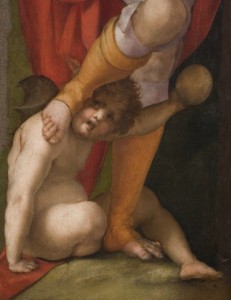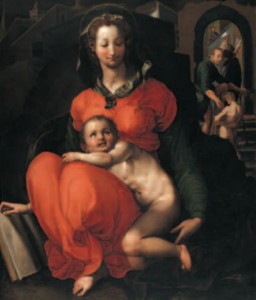Jacopo Carucci, known as Pontormo (Pontorme, Empoli 1494 – Florence 1556), is one of the greatest of all Italian artists. Indeed, he is the symbol of that extraordinary season that was called the “modern manner” by Giorgio Vasari.
The sequence of misfortunes that troubled Pontormo’s early years of life had an unsettling influence throughout his life. Still perhaps too much has been said about his mental condition. Surely his work reflects (but in the most elevated poetic terms) his private meditations. His daring, anti-conformist works are among the 16th century’s absolute masterpieces.
Jacopo Carucci was born in a small house located at the present-day Via Pontorme 97. Thanks to documentary evidence, the building was accurately identified by Ugo Procacci in 1956. On the facade is a commemorative plaque composed by Emilio Cecchi for the fourth centenary of the painter’s death. It is a three-story, medieval building that spreads over an area of more than one hundred square meters.
Pontormo’s birthplace was acquired by the Municipality of Empoli at the end of 1995, for the celebration of the fifth centenary of the artist’s birth, commemorated by several institutions in Tuscany.
The purchase was undertaken in the belief that any initiative paying tribute to the artist would be diminished if his memory were not also enhanced in the Empoli area. Pontormo’s home has been open to the public since May 2006, following the excellent restoration undertaken by the city.


